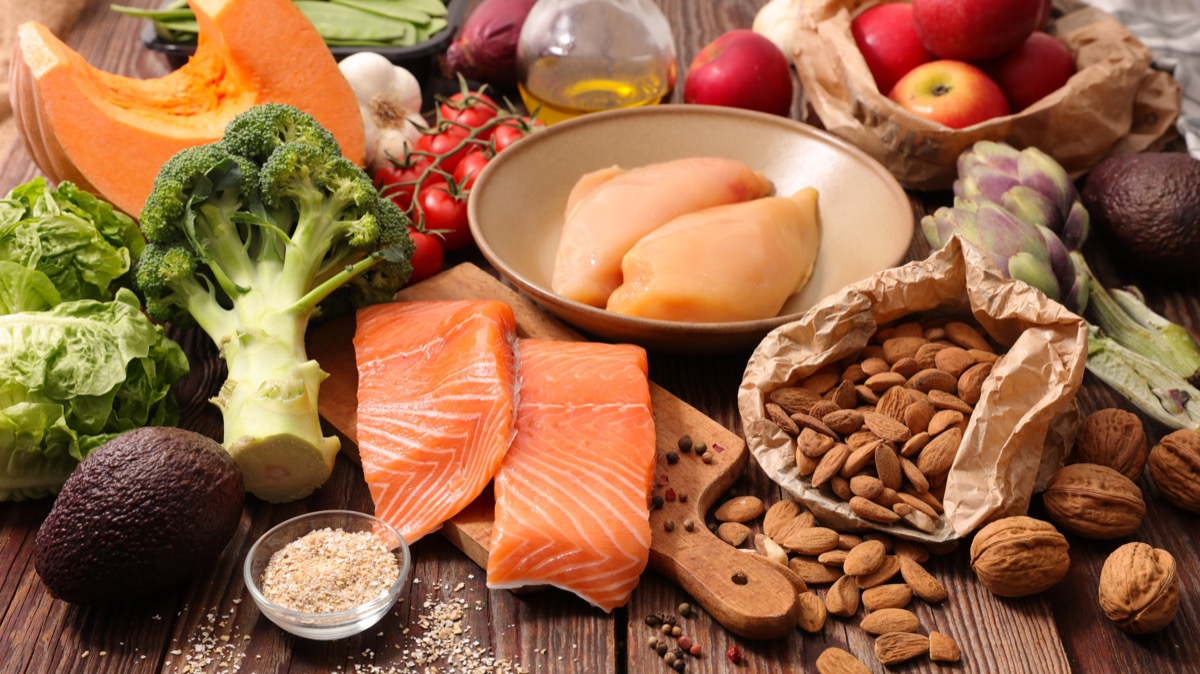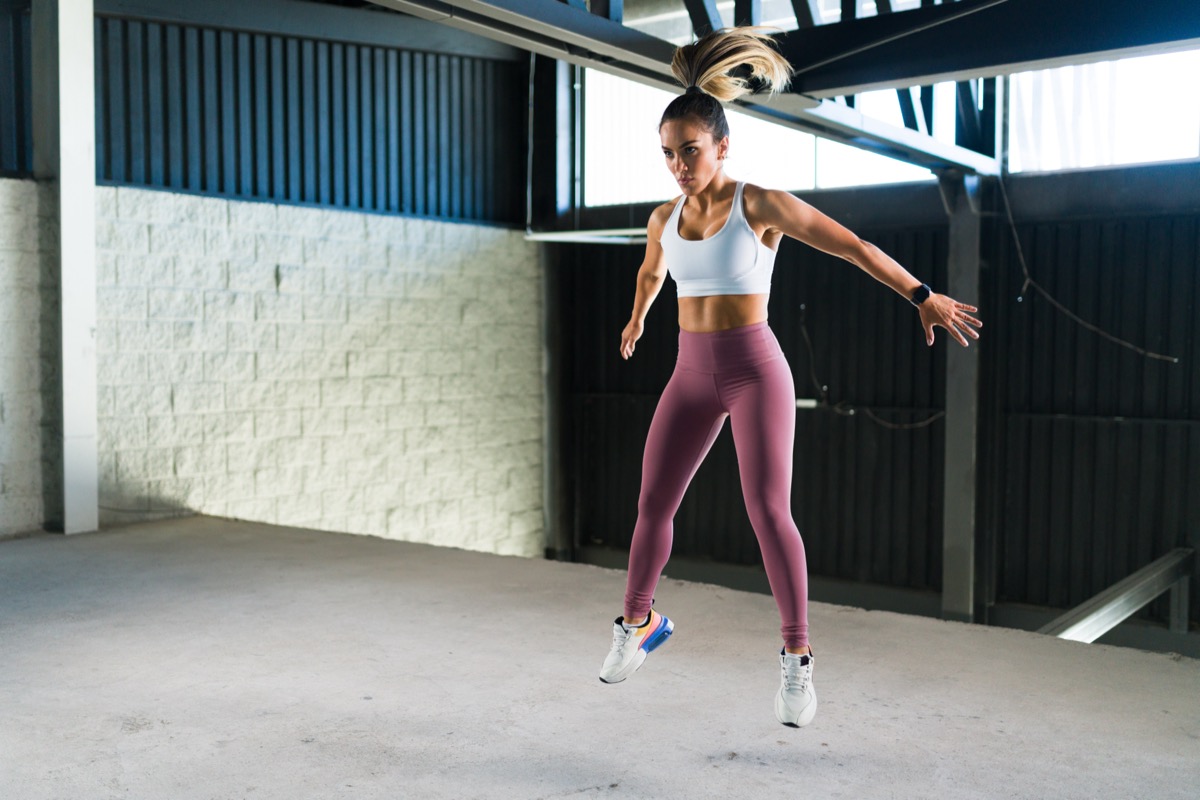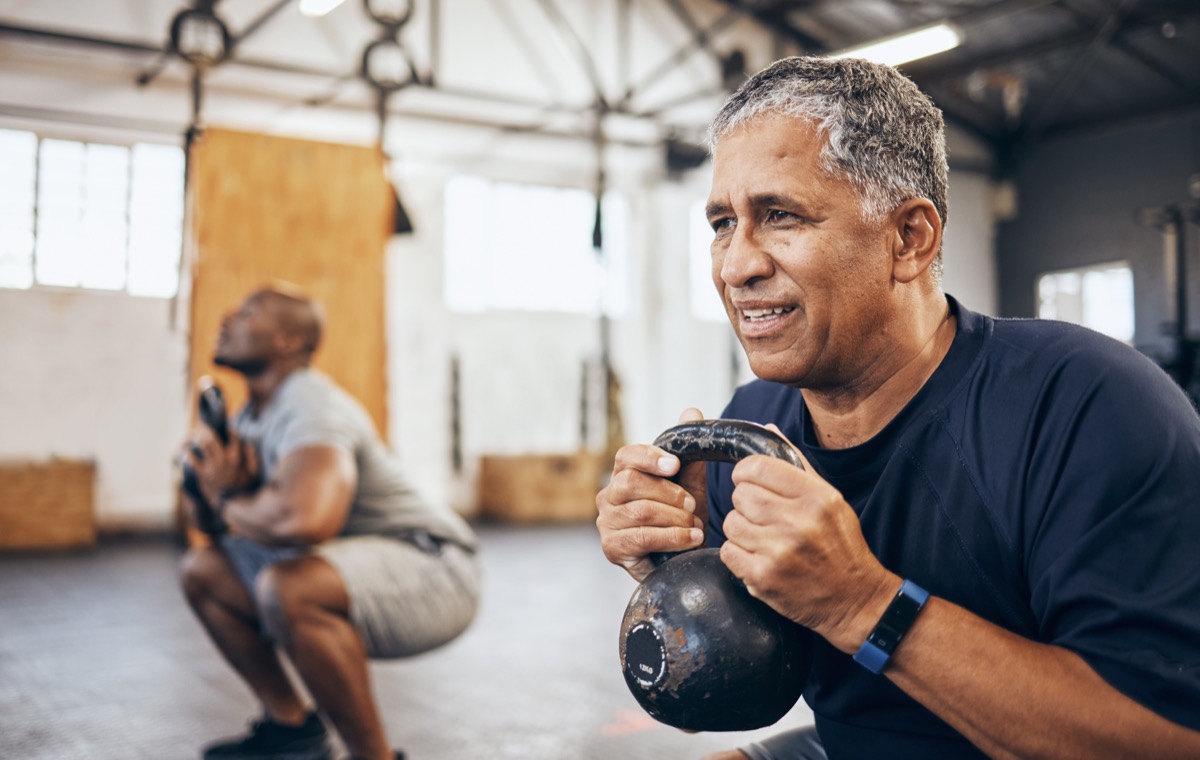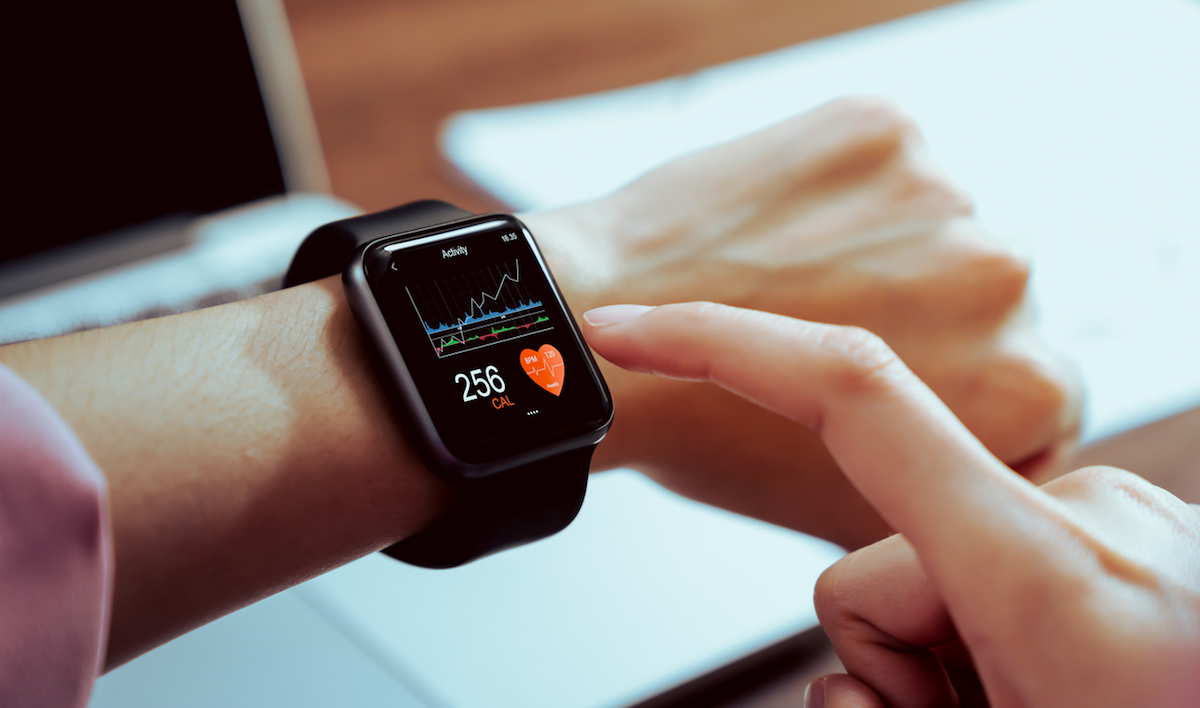Body fat is often vilified, but the fact is that we need a certain amount of fat on our bodies to live. Besides acting as a reserve of energy that the body can deploy as needed to protect against starvation, fat is also used to cushion and protect the organs, keep you warm, support cell growth, and help the body absorb vital nutrients. That said, when fat accumulates in excess on your body, it can increase your risk for developing chronic health problems, including heart disease, stroke, diabetes, certain cancers, and more. It can also feel especially stubborn to lose when it’s concentrated in one area, which is why many of us wonder how to get rid of back fat.
While you can’t target any one area of the body for fat loss, there are ways to get rid of back fat by aiming for overall weight loss and targeted toning. Read on to learn what fitness experts recommend to their clients so you can finally shed those persistent extra pounds for good.
RELATED: 7 Best Kettlebell Workouts for Weight Loss, Fitness Experts Say.

“Reducing overall body fat through diet will contribute to fat loss in the back,” says Chris Pruitt, CPT, a certified personal trainer and the CEO of WorkoutHealthy.
Eating a wide variety of whole foods, including lean sources of protein, whole grains, fiber-rich fruits and vegetables, and healthy fats, as well as avoiding processed foods full of sugar, saturated fat, and sodium, should help you manage your weight.
Tracking your calorie intake can also help ensure that you’re operating at a deficit. By reducing your calorie intake by 500 calories per day, you should be on track to lose one pound per week.

There’s no single exercise that will spot-reduce fat solely on your back, but establishing a consistent routine of cardiovascular exercise should help you lose weight, including in that area of your body.
The Centers for Disease Control and Prevention (CDC) recommends completing a minimum of 150 minutes of cardiovascular exercise per week, though doing more will help you reach your fat loss goals faster.
“Engage in regular cardio activities like running, swimming, or cycling to burn overall body fat, which will help reduce fat in the back,” recommends Pruitt.
RELATED: 8 Best Mediterranean Diet Foods to Eat for Weight Loss, Dietitians Say.

High-intensity interval training (HIIT) combines cardiovascular and strength training exercises for a high-powered workout. This type of exercise can help jumpstart your weight loss while simultaneously sculpting your muscles.
“Short bursts of intense exercise followed by brief recovery periods are great for burning calories and reducing body fat,” says Jim Richard, CPT, a certified personal trainer, AI fitness specialist, and wellness coach at JimmyJRichard.com. “HIIT gives us the boost of Excess Post-exercise Oxygen Consumption (EPOC) effect, which means we continue to burn calories even after our workout has ended. This helps speed up fat loss.”

Though it’s impossible to limit your fat loss to any one area, strength training exercises that target the back muscles—think rows, lat pulldowns, and deadlifts—can help create the appearance of a leaner and stronger back by toning those muscles.
Pruitt adds that building muscle mass will not only provide definition, but will also increase your overall metabolism and stamina for exercise.
“These target the back muscles and enhance overall muscle tone, which boosts metabolism and helps us to burn more fat,” agrees Richard. “From my experience, progressive overload—gradually increasing weight—gets the best results.”
RELATED: How to Get Abs, According to Fitness Experts.

Staying hydrated is an easy win when it comes to weight loss. By simply drinking lots of water, you can help promote metabolic processes and expedite fat loss.
“Optimized hydration boosts our exercise performance and recovery, meaning more effective workouts and increased calorie burn. Hydration also helps our digestion and removal of toxins. When we get our hydration right, it prevents water retention, which stops us [from] seeing the true effects of our back fat loss,” says Richard.
He notes that as you become more consistently hydrated, you’ll also learn to better distinguish between thirst and hunger, which can help reduce your appetite and curb unnecessary snacking.

Having a personal trainer or dietitian in your corner can help you see weight loss results faster because they can tailor a plan to your specific needs and offer real-time feedback on your progress. Richard says that using fitness tracking apps—especially those that utilize artificial intelligence (AI)—can offer similar benefits if hiring a trainer or dietitian is out of reach.
“AI can now analyze our fitness data, including workouts, dietary habits, and progress metrics, to create an optimized exercise and nutrition plan,” he tells Best Life. “When we use machine learning algorithms, AI gives insights into what works best for our bodies, adjusting recommendations in real time based on our progress. This maximizes and optimizes our fat loss.”
RELATED: 9 Best Resistance-Band Workouts for Weight Loss, Fitness Experts Say.

Your posture can also play a role in strengthening your back by consistently engaging those muscles even when you’re not working out. You’ll also reduce the appearance of back fat by not slouching and rounding your shoulders and upper back.
Pruitt says that besides simply sitting up straight with your head level and shoulders back, you can try exercises like yoga and Pilates to enhance posture and strengthen the back.

The most important thing to remember if you’re trying to get in shape is that consistency is key. Rather than getting hyper-focused on the scale, you should measure your success by how persistently you adhere to your diet, exercise, and lifestyle plan.
“You should start to see changes in a few weeks, but sticking to your diet and exercise routine is essential,” says Dave Mace, the founder and head coach for Maximum Potential Calisthenics. “Remember, getting your diet right is 70 percent of the battle. Strength training will improve your muscle tone, giving you a tighter, leaner look, while cardio is great for warming up the body and improving heart health.”
